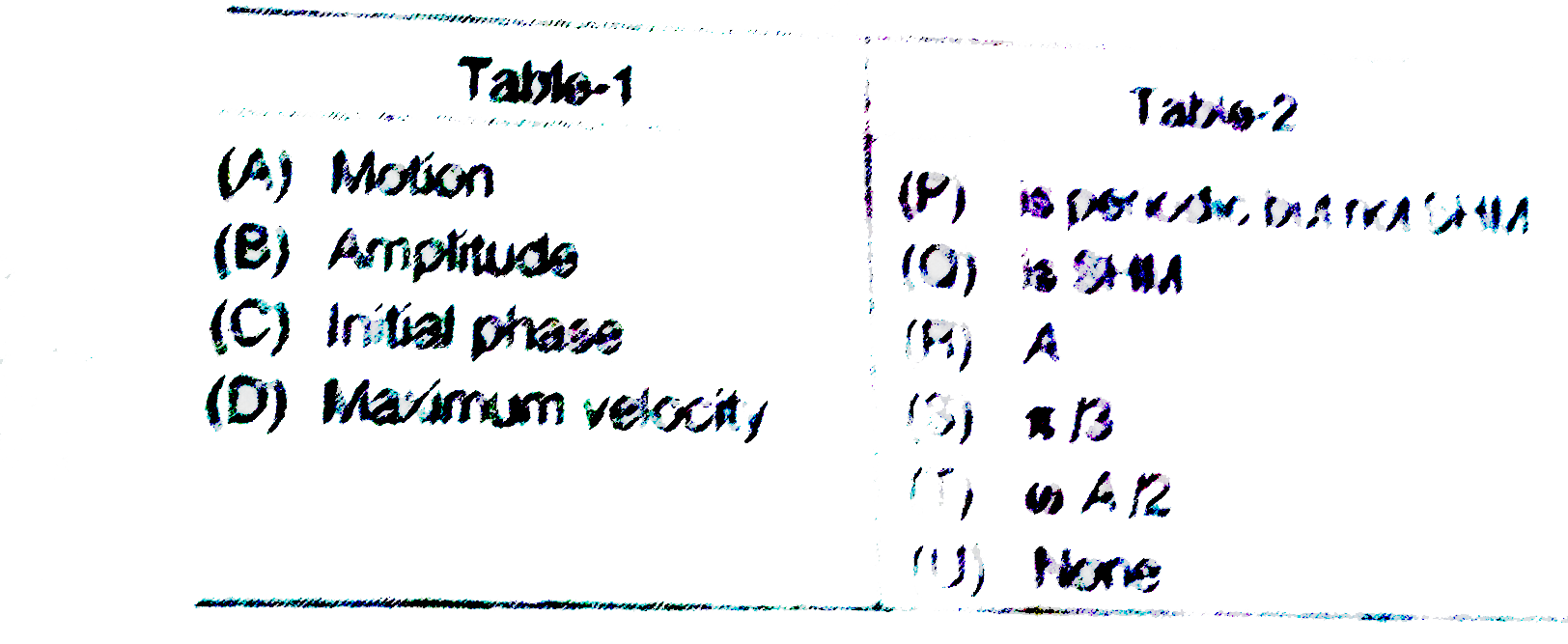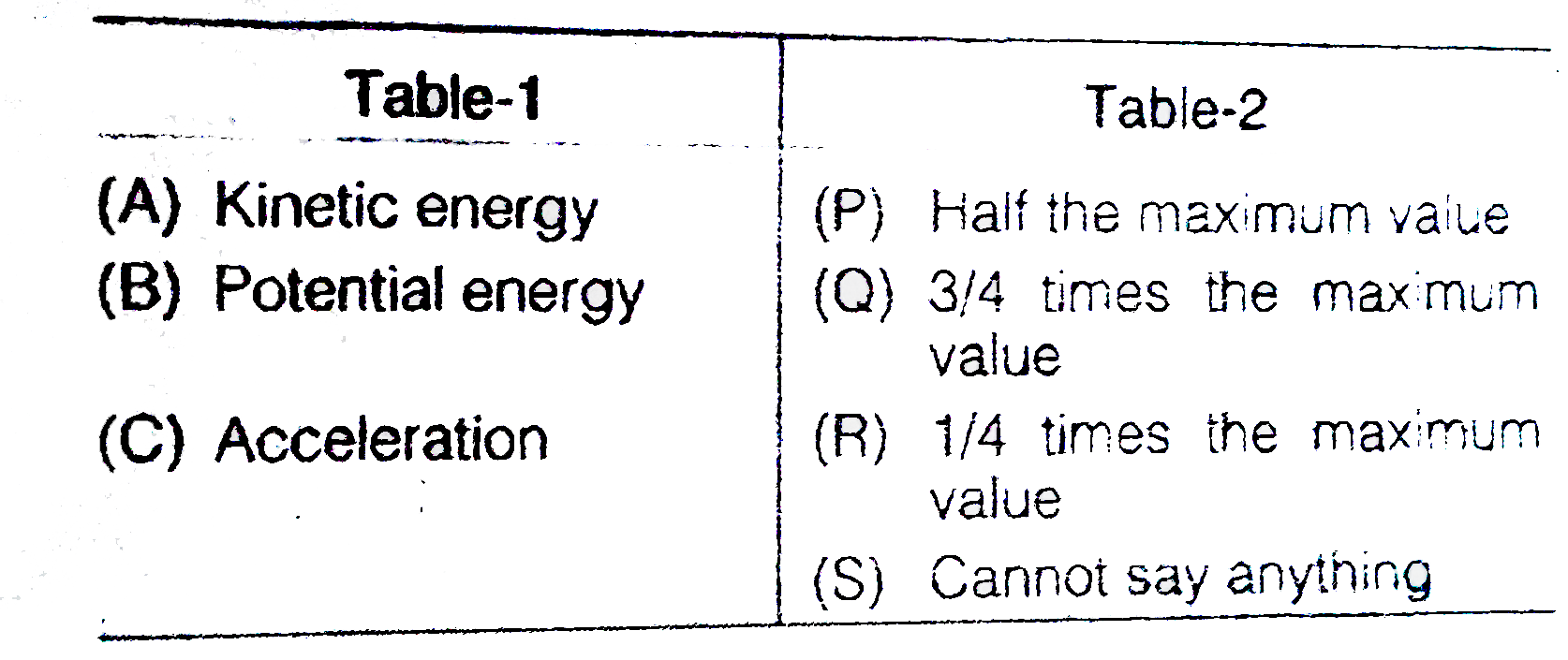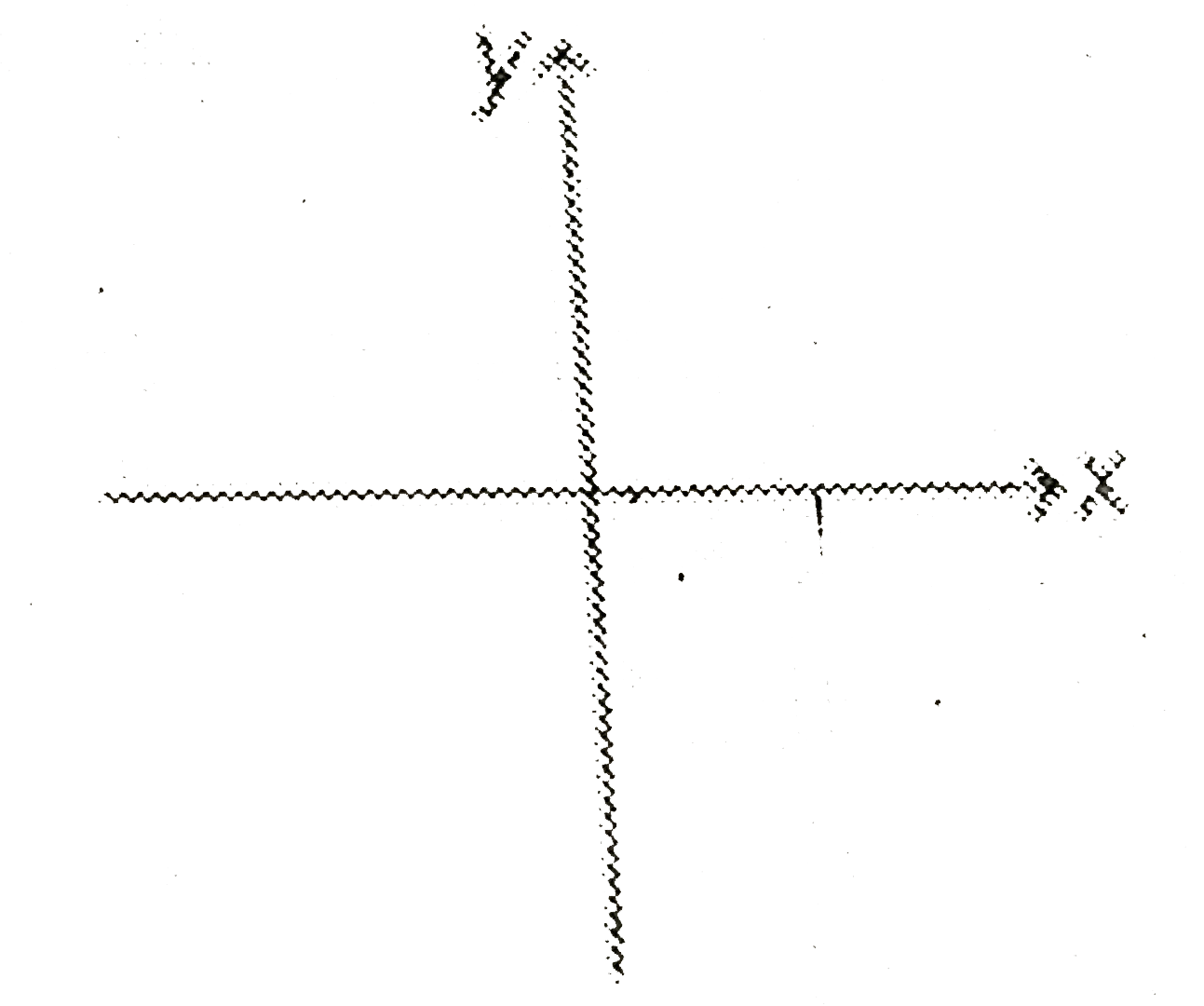In y=Asinωt+Asin(ωt=2π3), match the following.

The correct Answer is:A, B, C, D
Step by step video & image solution for In y=A"sin"omegat + A"sin"(omegat=(2pi)/(3)), match the following. by Physics experts to help you in doubts & scoring excellent marks in Class 11 exams.
Updated on:21/07/2023Topper's Solved these Questions
- SIMPLE HARMONIC MOTIONBOOK - DC PANDEY ENGLISHCHAPTER - SIMPLE HARMONIC MOTIONEXERCISE - Integer type questions
14 Videos
- SIMPLE HARMONIC MOTIONBOOK - DC PANDEY ENGLISHCHAPTER - SIMPLE HARMONIC MOTIONEXERCISE - Comprehension types
18 Videos
- SEMICONDUCTORS AND ELECTRONIC DEVICESBOOK - DC PANDEY ENGLISHCHAPTER - SEMICONDUCTORS AND ELECTRONIC DEVICESEXERCISE - More than One Option is Correct
3 Videos
- SOLVD PAPERS 2017 NEET, AIIMS & JIPMERBOOK - DC PANDEY ENGLISHCHAPTER - SOLVD PAPERS 2017 NEET, AIIMS & JIPMEREXERCISE - Solved paper 2018(JIPMER)
38 Videos
Similar Questions
In y= A sin ωt + A sin (ωt+(2π)/3) match the following table.

View SolutionIn the equation y=Asin(ωt+π4) match the following for x=A2.

View SolutionTwo waves represented by y=a sin(ωt−kx)andy=a sin(ωt−kx+2π3) are superposed. What will be the amplitude of the resultant wave?
View SolutionA particle is subjected to two mutually perpendicular simple harmonic motions such that its X and y coordinates are given by X=2sinωt , y=2sin(ω+π4)
The path of the particle will be:
View SolutionIf two waves represented by y1=4sinωt and y2=3sin(ωt+π3) interfere at a point find out the amplitude of the resulting wave
View SolutionTwo SHMs directed along x-axis and y-axis are superimposed on a particle of mass m. If x=A1sinωt and y= A_2 sin(omegat+pi),then path of the particle will be.
View SolutionFind the displacement equation of the simple harmonic motion obtained by conbining the motions.
x1=2sin ωt,x2=4sin (ωt+π6)
and x3=6sin(ωt+π3)
View SolutionA xandy co-ordinates of a particle are x=Asin(ωt)andy=Asin(ωt+π/2). Then, the motion of the particle is

View SolutionTwo waves represented by y=a sin(ωt−kx)andy=a sin(ω−kx+2π3) are superposed. What will be the amplitude of the resultant wave?
View SolutionTwo sinusoidal waves are superposed. Their equations are
y1=Asin(kx−ωt+π6)andy2=Asin(kx−ωt−π6)
the equation of their resultant is
View Solution
